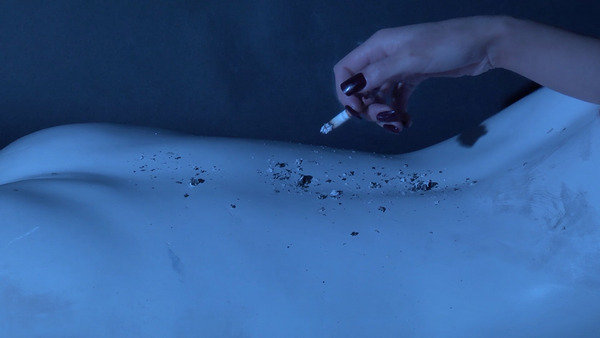Cacophony of Things
dal 11/12/2014 al 14/3/2015
Segnalato da
11/12/2014
Cacophony of Things
Temporary Gallery, Koln
The exhibition examines this question by dividing itself up into two spaces; one is devoted to the artworks and the other is devoted to the things. Work and thing are differentiated here to the extent that the work appears self-contained and defined while the thing appears as container of substitute for something still vague.

curated by: Regina Barunke
A thing is nothing other than the difference between that
which is in the thing and that in which this thing is. (Tris-
tan Garcia, in: Form and Object, 2014:122)
“Cacophony of Things” explores the developmental logic
of contemporary art, whose often hybrid and open works
describe an extremely diverse scope of themes and frames
of reference. The limitlessness of artistic references goes
hand in hand with the question concerning an artistic idea,
how it emerges and how it is conveyed by a work of art.
The exhibition deals with these questions by dividing
itself up into two spaces; one is devoted to the works and
the other is devoted to the things. Work and thing are
differentiated here to the extent that the one appears self-
contained and defined while the other (at least in the
world of art still) appears vague. Language is the element
that links the two. This is shown polyphonically in the
exhibition, if not even cacophonously. It is language that
is inherent to works and things and it is language that
attempts to create connections between works and things.
The exhibition consequently describes a physical and a
linguistic moment of transition from the space of the
things into that of the artworks.
An array of things is presented on a table in the front
room of the Temporary Gallery. Each object, whether an
mp3 player with a personal selection of music, a letter
from the artist, a selected quotation or something lent by a
friend, was made available by the five young international
artists participating in the exhibition – Paweł Kruk (1976,
PL), Mélanie Matranga (1985, F), Shelly Nadashi (1981,
IL), Sue Tompkins (1971, UK) and Jala Wahid (1988,
UK) – and is to be comprehended as a fragment from a
considerably more complex, subjective frame of refer-
ence. The reasons for their selection and their intrinsic
meanings and interpretations as well as the connection to
the work can be successively examined over the course of
the exhibition in public discussions between the artists
and invited guests. These talks are an integral part of the
exhibition and will both explore the respective artistic
idea and the connection to the work.
The rear space in the Temporary Gallery is dedicated to
the works. Cables recalling the information channels in a
conference room wind their way under the beige carpet
covering the floor of the exhibition space, albeit without
any visible entrance or exit. A lack of connections, seman-
tic uncertainty and a metaphorical flow of information
characterise “Complexe ou compliqué” (2014) by the
French artist Mélanie Matranga. A bed construction hov-
ers on thin wires under the ceiling. Here as well, Matranga
explores the question of the alternity of spaces in the
digital age: The bedroom is increasingly replacing the
office; intimacy and the data universe merge into each
other.
“Backpacks and Other Objects” (2014) designates the
multipart installation by the Israeli artist Shelly Nadashi
consisting of tree-like sculptures with branches and deli-
cate metal stands and mask-like papier-mâché heads in
addition to three coloured charcoal drawings depicting
various backpacks. The notion of a body as an amorphous
form or as a container is also expressed in Nadashi’s
projection “A Hidden Quiet Pocket” (2014) in the gal-
lery’s central space. A masseuse and a rich client en-
counter each other in this 20-minute long video.
The
question concerning the most profitable form of investing
capital in real estate culminates in a surreal and orgiastic
trial of strength between their bodies and languages.
The video “I’ve got a burning desire (come on, tell me
boy)” (2014) by the London artist Jala Wahid crystallises
a moment of corporeal-sensual yearning on a flat screen.
Wahid not only replaces potential dialogue with recurring
sound patterns from Lana Del Rey’s eponymous music
clip in this four-minute long loop but also employs the
few technical means of blue filter and limited picture
detail in order to make the indifference between inorganic
and organic bodies evident.
The loss of language is likewise the theme of Paweł
Kruk’s contribution, “The Lost Interview” (2009). The
Polish artist’s video presents the re-enactment of a 1971
television interview in which he plays the part of martial
art star Bruce Lee. He lip-syncs excerpts but technical and
linguistic interferences cause a disturbing role reversal
between artist and alter ego.
Sue Tompkins, who filters the written word from personal
notes, texts and everyday language and translates them into
rhythmic inflected speech in numerous performance and
textual works, will present a new performance in
conjunction with the exhibition. Language will not only
presented ephemerally but is also conveyed physically into
the exhibition spaces.
Image: Jala Wahid, Burning desires
Press Contact: Sonja Hempel, sh@temporarygallery.org
Opening: Opening: Fr., 12.12., 19 Uhr / 7 p.m.
Temporary Gallery
Mauritiuswall 35
D 50676 KÖLN
Thu-Fri 2-6 pm, Sat-Sun 1-5 pm



